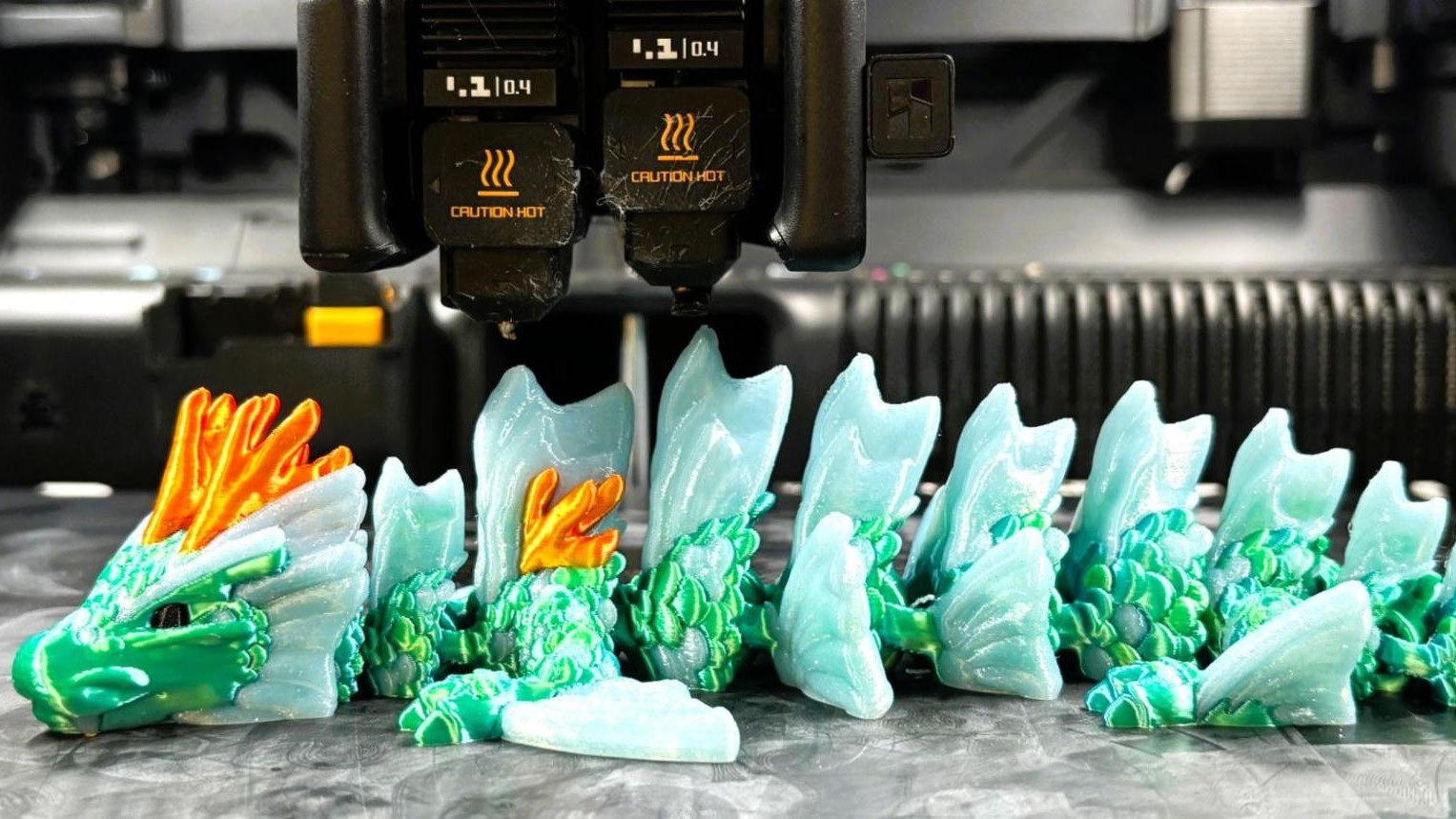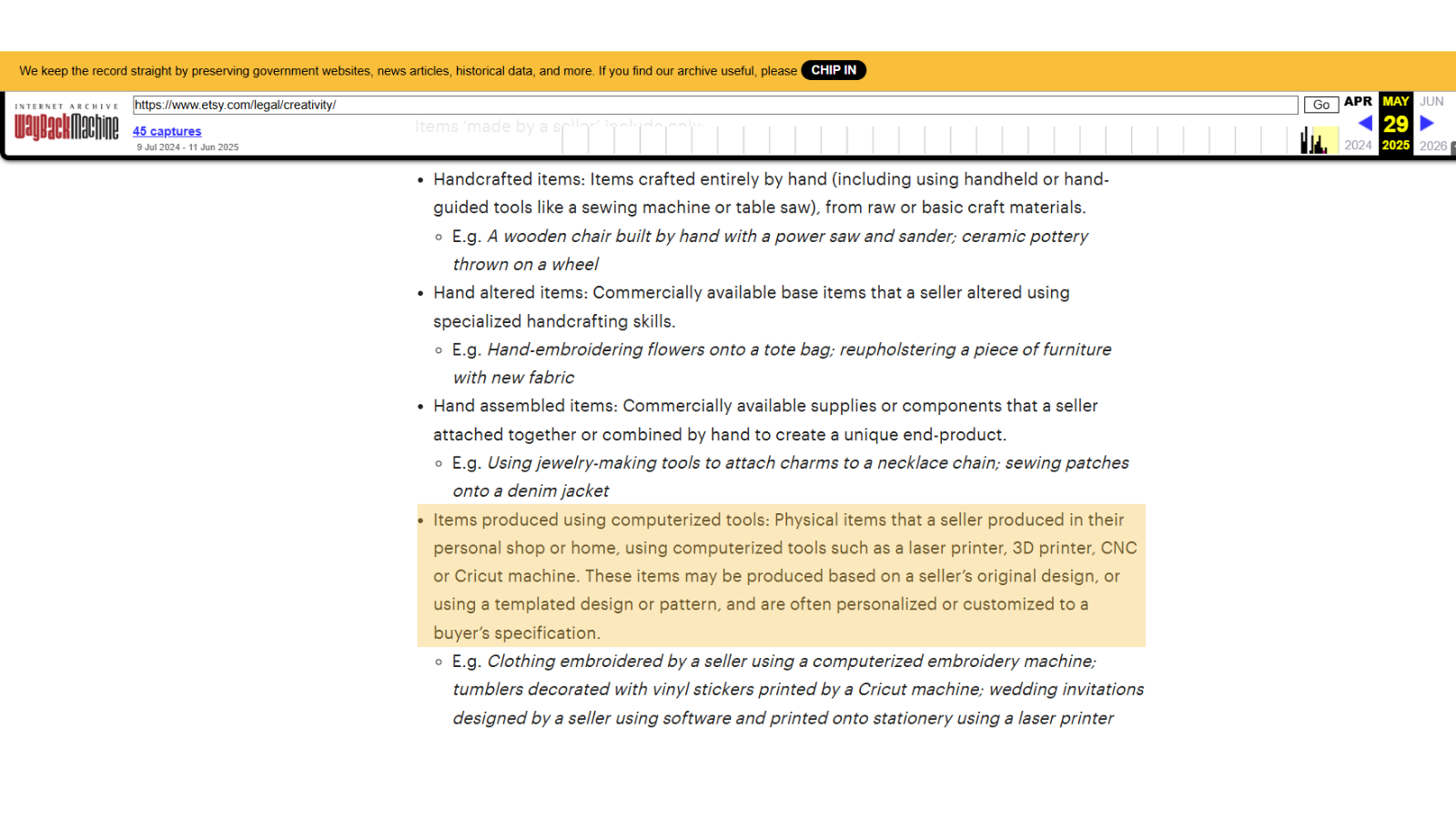Etsy cracks down on 3D printed products — new rules exclude many 3D printed items from listings

Etsy has redefined its Creativity Standards to exclude a vast majority of 3D printed goods sold on its website. Now, anything 3D printed must be “produced based on a seller’s original design.” This would seem to eliminate the wildly popular flexi dragon prints - and many other 3D printed items - that can be found by the thousands on Etsy’s virtual shelves.
The move took 3D print sellers by surprise, as it was unannounced by Etsy itself. Instead, the update was caught by sharp-eyed Etsy sellers who bothered to read the legal section under “Our House Rules,” which was buried a few pages deep in a recent Etsy community newsletter about keeping “our marketplace safe.” The alarm was sounded throughout 3D print forums as Etsy sellers panicked that their shops might be shut down.
When Etsy first launched 20 years ago, it was an online bazaar of handmade crafts and vintage clothes. Sophie Duba, Senior Director of Marketplace Policy at Etsy, joked during a video about the policy changes, that in the early days they weren’t sure if they’d allow the use of sewing machines to make handmade items. Now the site is flooded with cheap trinkets sold by dropshippers, resellers, and sadly, large 3D print farms.
The company began cleaning house in 2024 by introducing “Creativity Standards” to reassure shoppers that Etsy still had a human touch. Under the new policy, every one of the millions of items on Etsy’s virtual shelves should fit into one of four categories: “made by (seller),” “designed by (seller),” “handpicked by (seller),” and “sourced by (seller).” The categories are pretty loose, but Etsy hoped this would keep humans in the loop.
3D print sellers have assumed they fit in the “made by seller” category, as they do make physical products. The original Creativity Standards, seen here in a May 29, 2025, screenshot from the Wayback Machine, state that items “Made by a seller” can be produced with computerized tools from a design or pattern.
That line has now been changed to read:
“Items produced using computerized tools: Physical items that a seller produced in their personal shop or home, using computerized tools such as a laser printer, 3D printer, CNC or Cricut machine. These items must be produced based on a seller’s original design and are often personalized or customized to a buyer’s specification.”
Get Tom's Hardware's best news and in-depth reviews, straight to your inbox.
This would exclude the thousands of makers who subscribe to designers like Cinderwing3D, and have permission to print and sell her articulated dragon designs.
Etsy did not say how it plans to enforce the new policy. Designers are encouraging their supporters to stay calm and wait for clarification. Until then, sellers may be able to keep their shops open by putting a little extra effort into their listing and photos so they have unique personality. Advice being shared on another designer’s Discord suggested personalizing with sanding and painting, allowing customers to pick out their materials, creating gift baskets and offering prints as kits that allow buyers to have a more hands on experience with the product.
3D printing as a whole is not endangered on Etsy, as printing and selling your own creations is still encouraged. And people with a stockpile of 3rd party designs can still sell items on other platforms like Facebook Marketplace, eBay or TikTok. In person vending at festivals and craft fairs is also an option.
Follow Tom's Hardware on Google News to get our up-to-date news, analysis, and reviews in your feeds. Make sure to click the Follow button.

Denise Bertacchi is a Contributing Writer for Tom’s Hardware US, covering 3D printing. Denise has been crafting with PCs since she discovered Print Shop had clip art on her Apple IIe. She loves reviewing 3D printers because she can mix all her passions: printing, photography, and writing.
-
Alvar "Miles" Udell The irony of banning items you didn't design yourself yet allowing and profiteering from items that feature unlicensed IP...Reply -
USAFRet Reply
Many downloadable files specifically allow commercialization. Print and sell.Alvar Miles Udell said:The irony of banning items you didn't design yourself yet allowing and profiteering from items that feature unlicensed IP... -
HK2K It’s about time. The ‘race to the bottom’ is one of the reasons I stopped selling on Etsy. Even when you design your own stuff, you’re lost in the jungle of 500000 listings from subscribers to Patreon and whatnot.Reply -
Ladyvip I finally reached the point where I was planning to quit my job I hate, because each month I finally had consistently earned enough to get by and then some. I was exclusively selling on Etsy. Even if you do not design your prints, many requires lot of post-processing, and ALL requires some manual labor. It's not like a paper printer. I pay for "merchant licenses" for patreon designers, and I occasionally paint the figures, but because I am alone I can only paint some of them. I get why they want to cut down on it due to many terrible and illegal sellers, but actually messing up people with legal, good quality prints, too, is not the way to go. Etsy is a huge marketplace, and for many countries, like mine, one of the very few viable options. It will be a bit harder to find someone to print for you and I am pretty sure some Patreon 3D designers will also notice at least some drop in the sales of their commercial licenses.Reply -
drmischief Glad to see Etsy is continuing its downward trajectory to a pile of flames and ash. Ever since the policy changes a couple of years ago that alienate and dissuade actual individual makers, they've been worthless. Etsy will never be Amazon and they need to stop trying to do.Reply -
SyCoREAPER That's BS. Those are among the few products that actually end up being exactly as advertised. If it werent for the Etsy seller I wouldnt have a Noctua cooled 4090Reply -
radfaraf Meanwhile for a long time they seem to have absolutely no problem with mass produced goods from China that are then resold by usa sellers.Reply -
HappyGothGal Honestly, I love this decision. I've been making jewelry by hand using my own designs. My longest project took 2 years, I work until I'm ecstatic to wear it myself before I sell it, but most projects take a few months.Reply
I pick out all the beads I use, I pick it 6 all the chains I use, I pick out all the elastics I use, I pick out all the feathers I use, I pick out all the fabric I use, I hand sew EVERYTHING, I pick out EVERYTHING I use, I pick out the model trainset trees I want to use for very specific jewelry, and all these people are buying a blueprint and selling someone else's creation. -
HappyGothGal I wear all my own jewelry and sell independently and everyone tells me to sell on Etsy and I never have because people just buy 3D printed "cool designs" from artists who design things and then just sell it like it's their own. The market has been oversaturated with unoriginal, regurgitated 3D designs, and it makes me sad.Reply
As far as I have known, Etsy has always been for original designers. If your want to buy the rights to 3D print some copy and pasted swill, just sell it on those highly marketed influencer sites
